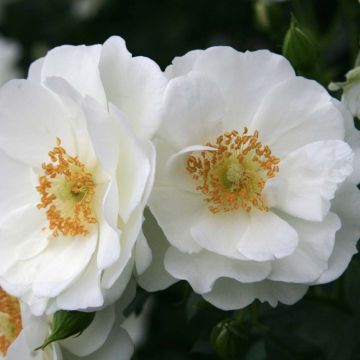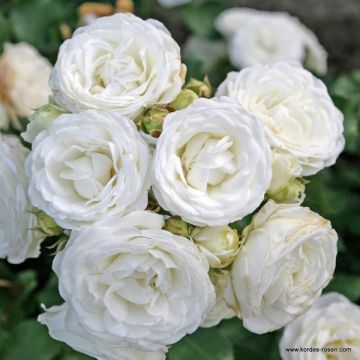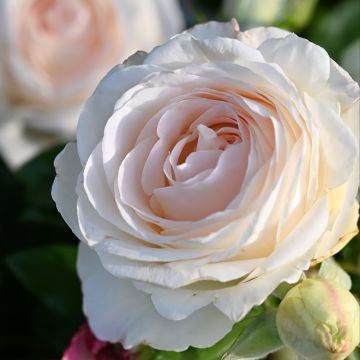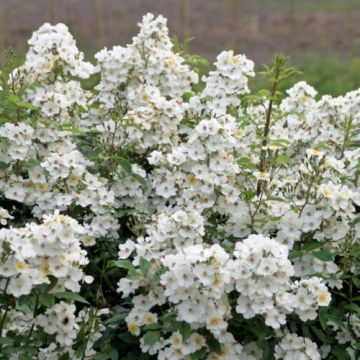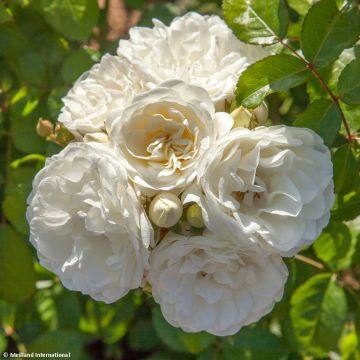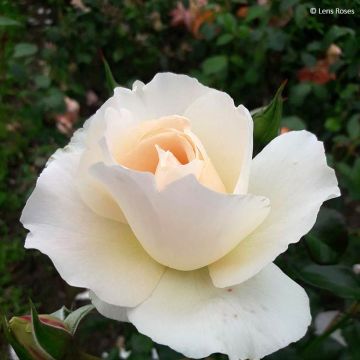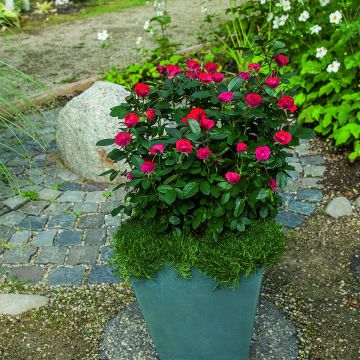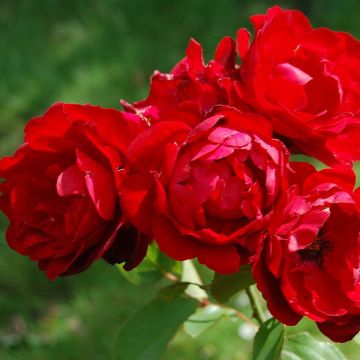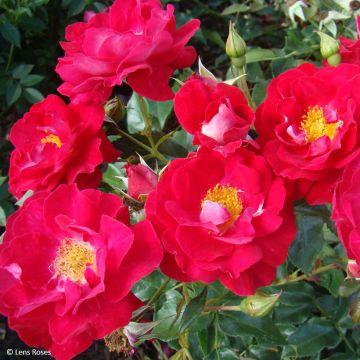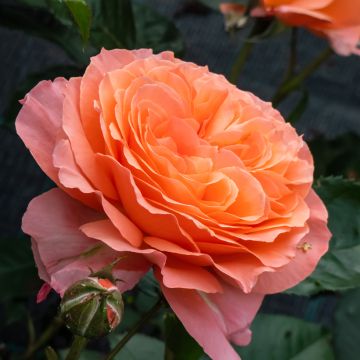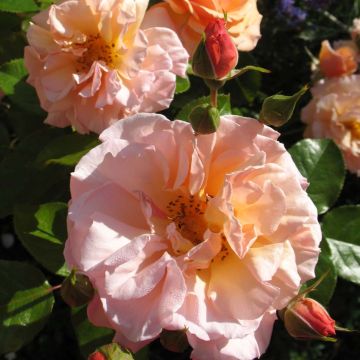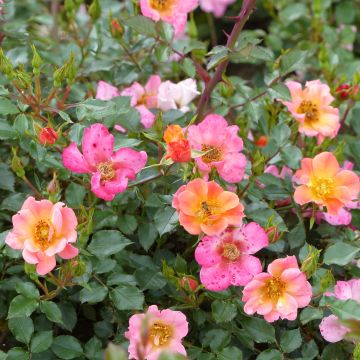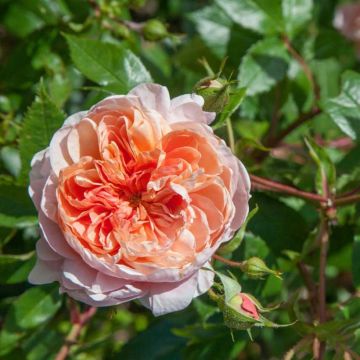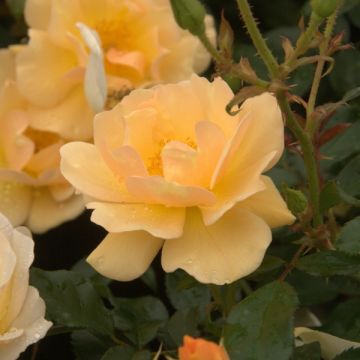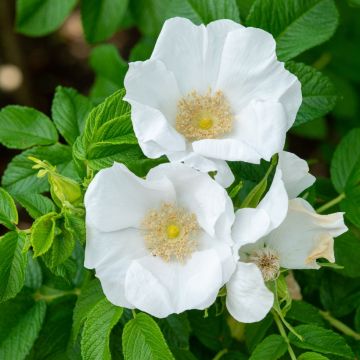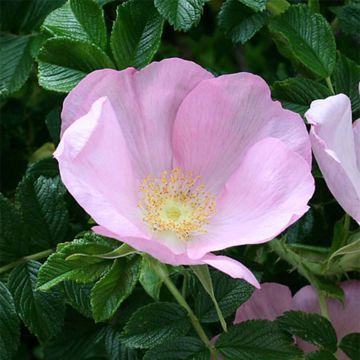Shipping country and language
Your country of residence may be:
Your country of residence is:
For a better user experience on our website, you can select:
Your shipping country:
Andorra
Austria
Belgium
Bulgaria
Canada
Chile
Croatia
Cyprus
Czechia
Denmark
Estonia
Finland
France
Germany
Greece
Hungary
Iceland
Ireland
Italy
Latvia
Lithuania
Luxembourg
Malta
Monaco
Netherlands
Poland
Portugal
Romania
Slovakia
Slovenia
Spain
Sweden
Switzerland
United Kingdom
We only deliver seed and bulb products to your country. If you add other products to your basket, they cannot be shipped.
Language:
French
German
Spanish
English
My Account
Hello
My wish lists
Plantfit
Log in / Register
Existing customer?
New customer?
Create an account to track your orders, access our customer service and, if you wish, make the most of our upcoming offers.
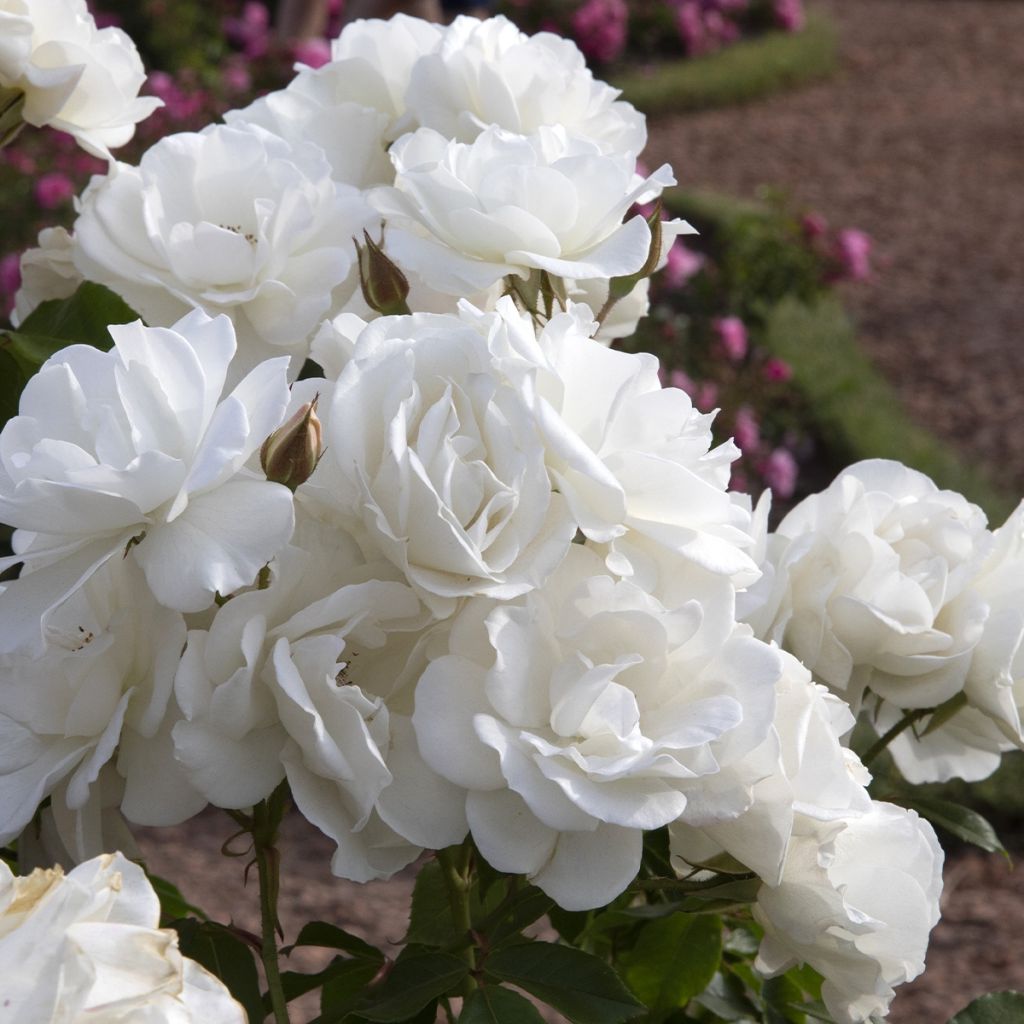

Rosier Patio Rose Baby Iceberg


Rosier Patio Rose Baby Iceberg
Rosa x floribunda PATIO ROSE Baby Iceberg - Floribunda Rose
Rosa x floribunda PATIO ROSE® Baby Icebergl® KORfloci111
Rose
Thanks to the team (for order preparation and shipping), the rose bush I received looks healthy. Planted near a Photinia x fraseri, I am now patiently waiting for it to take root... (or not?).
Thierry, 20/09/2024
Why not try an alternative variety in stock?
View all →Order in the next for dispatch today!
Dispatch by letter from €3.90.
Delivery charge from €5.90 Oversize package delivery charge from €6.90.
More information
This item is not available in your country.
Schedule delivery date,
and select date in basket
This plant carries a 24 months recovery warranty
More information
We guarantee the quality of our plants for a full growing cycle, and will replace at our expense any plant that fails to recover under normal climatic and planting conditions.
From €5.90 for pickup delivery and €6.90 for home delivery
Express home delivery from €8.90.
Does this plant fit my garden?
Set up your Plantfit profile →
Description
'Baby Iceberg' from the Patio Rose collection is an excellent variety from Kordes that combines floribundity, charm, and natural disease resistance, qualities that have made the reputation of the German rose breeder. This bush with a harmonious habit is covered with beautiful glossy foliage that serves as a backdrop for clusters of barely double, snow-white roses surrounding a cream-shaded centre. The flowering is early and continues continuously throughout the summer, abundantly, even without pruning. A charming and carefree little rose, to be used in borders, or in pots on the balcony.
Rosa x floribunda 'Baby Iceberg' was introduced to the market by rose breeder Kordes Rosen in 2020. This lovely creation is part of a series of roses, the 'Patio Rose' selected in partnership with 'Globe Planter' for their floribundity and excellent adaptation to pot culture. Baby Iceberg, as its name suggests, resembles a compact version of the famous rose Iceberg (Snow Fairy). It is characterised by an upright and bushy habit, well-branched, balanced. This bush reaches approximately 70 cm (28in) in height and 50 cm (20in) in spread. Its thorny stems bear medium green leaves, divided into 5 finely toothed leaflets, shiny, very disease resistant. Its flowering is early and long-lasting, it renews tirelessly from May to October if the soil remains moist. The flowers are semi-double cups 5 to 6 cm (2in) in diameter, gathered in terminal clusters. The deciduous foliage falls in autumn.
Floribunda roses can be used to create beautiful small hedges, planted in a mix at the edge of the patio, along a path or in small shrub borders. Combine them with dwarf abelias, Mexican orange trees, or bluebeards for example. They are good companions for phlox and perennial geraniums. This variety 'Baby Iceberg' will be highlighted when planted in groups of 3 plants, forming an extremely bright bush. For example, surround it with catmints and perennial salvias with blue, violet, pink, mauve, or white flowers. Also, combine it with groundcover roses, gypsophilas, or even lavenders. This very hardy rose that requires little maintenance will thrive in full sun or partial shade. It will delight all gardeners, beginners or experienced.
Plant habit
Flowering
Foliage
Botanical data
Rosa
x floribunda
PATIO ROSE® Baby Icebergl® KORfloci111
Rosaceae
Rose
Cultivar or hybrid
Other Polyantha clustered Roses
Planting and care
Plant the Patiorose Baby Iceberg rose from November to March, in ordinary, well-prepared, and well-drained soil. Roses prefer clay soils that are rather heavy than light. In soils that are too sandy, compact, or dry in summer, it is preferable to incorporate compost, decomposed manure, or humjus at the bottom of the planting hole. However, this rose dislikes waterlogged soils in winter. Place it in a sunny location, preferably in partial shade. Roses are hungry plants, and a specific fertiliser application will be beneficial at the start of vegetation, and regularly throughout the flowering period.
To encourage reblooming, regularly remove faded old flowers. Floribunda rose varieties are more vigorous and floriferous than large-flowered rose varieties. Therefore, prune the stems by about a quarter of their length (from 4 to 6 buds from the base of the stem) in late winter. Always prune above an outward-facing bud to allow the bush to bush out and prevent the branches from tangling in the centre of the branches.
Planting period
Intended location
Care
- , onOrder confirmed
Reply from on Promesse de fleurs
Roses by purpose
Haven't found what you were looking for?
Hardiness is the lowest winter temperature a plant can endure without suffering serious damage or even dying. However, hardiness is affected by location (a sheltered area, such as a patio), protection (winter cover) and soil type (hardiness is improved by well-drained soil).

Photo Sharing Terms & Conditions
In order to encourage gardeners to interact and share their experiences, Promesse de fleurs offers various media enabling content to be uploaded onto its Site - in particular via the ‘Photo sharing’ module.
The User agrees to refrain from:
- Posting any content that is illegal, prejudicial, insulting, racist, inciteful to hatred, revisionist, contrary to public decency, that infringes on privacy or on the privacy rights of third parties, in particular the publicity rights of persons and goods, intellectual property rights, or the right to privacy.
- Submitting content on behalf of a third party;
- Impersonate the identity of a third party and/or publish any personal information about a third party;
In general, the User undertakes to refrain from any unethical behaviour.
All Content (in particular text, comments, files, images, photos, videos, creative works, etc.), which may be subject to property or intellectual property rights, image or other private rights, shall remain the property of the User, subject to the limited rights granted by the terms of the licence granted by Promesse de fleurs as stated below. Users are at liberty to publish or not to publish such Content on the Site, notably via the ‘Photo Sharing’ facility, and accept that this Content shall be made public and freely accessible, notably on the Internet.
Users further acknowledge, undertake to have ,and guarantee that they hold all necessary rights and permissions to publish such material on the Site, in particular with regard to the legislation in force pertaining to any privacy, property, intellectual property, image, or contractual rights, or rights of any other nature. By publishing such Content on the Site, Users acknowledge accepting full liability as publishers of the Content within the meaning of the law, and grant Promesse de fleurs, free of charge, an inclusive, worldwide licence for the said Content for the entire duration of its publication, including all reproduction, representation, up/downloading, displaying, performing, transmission, and storage rights.
Users also grant permission for their name to be linked to the Content and accept that this link may not always be made available.
By engaging in posting material, Users consent to their Content becoming automatically accessible on the Internet, in particular on other sites and/or blogs and/or web pages of the Promesse de fleurs site, including in particular social pages and the Promesse de fleurs catalogue.
Users may secure the removal of entrusted content free of charge by issuing a simple request via our contact form.
The flowering period indicated on our website applies to countries and regions located in USDA zone 8 (France, the United Kingdom, Ireland, the Netherlands, etc.)
It will vary according to where you live:
- In zones 9 to 10 (Italy, Spain, Greece, etc.), flowering will occur about 2 to 4 weeks earlier.
- In zones 6 to 7 (Germany, Poland, Slovenia, and lower mountainous regions), flowering will be delayed by 2 to 3 weeks.
- In zone 5 (Central Europe, Scandinavia), blooming will be delayed by 3 to 5 weeks.
In temperate climates, pruning of spring-flowering shrubs (forsythia, spireas, etc.) should be done just after flowering.
Pruning of summer-flowering shrubs (Indian Lilac, Perovskia, etc.) can be done in winter or spring.
In cold regions as well as with frost-sensitive plants, avoid pruning too early when severe frosts may still occur.
The planting period indicated on our website applies to countries and regions located in USDA zone 8 (France, United Kingdom, Ireland, Netherlands).
It will vary according to where you live:
- In Mediterranean zones (Marseille, Madrid, Milan, etc.), autumn and winter are the best planting periods.
- In continental zones (Strasbourg, Munich, Vienna, etc.), delay planting by 2 to 3 weeks in spring and bring it forward by 2 to 4 weeks in autumn.
- In mountainous regions (the Alps, Pyrenees, Carpathians, etc.), it is best to plant in late spring (May-June) or late summer (August-September).
The harvesting period indicated on our website applies to countries and regions in USDA zone 8 (France, England, Ireland, the Netherlands).
In colder areas (Scandinavia, Poland, Austria...) fruit and vegetable harvests are likely to be delayed by 3-4 weeks.
In warmer areas (Italy, Spain, Greece, etc.), harvesting will probably take place earlier, depending on weather conditions.
The sowing periods indicated on our website apply to countries and regions within USDA Zone 8 (France, UK, Ireland, Netherlands).
In colder areas (Scandinavia, Poland, Austria...), delay any outdoor sowing by 3-4 weeks, or sow under glass.
In warmer climes (Italy, Spain, Greece, etc.), bring outdoor sowing forward by a few weeks.

